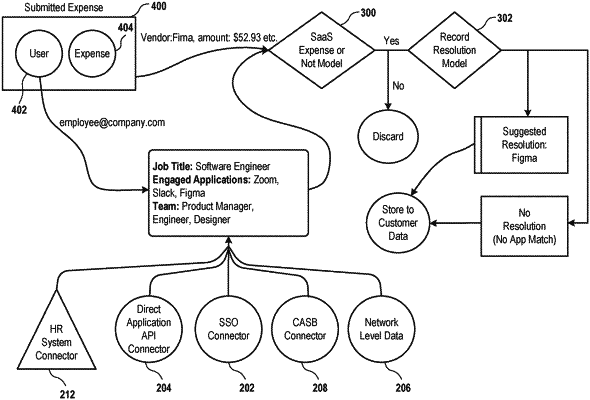| CPC G06Q 40/12 (2013.12) [G06Q 10/105 (2013.01)] | 19 Claims |

|
1. A non-transitory computer-readable medium having program instructions embodied thereon that, when executed by at least one server computer, cause said at least one server computer to perform a method implemented in a Software as a Service (SaaS) management platform (SMP), said method including the following operations:
receiving a plurality of expense records for a customer organization, wherein each one of the plurality of expense records identifies a user, a vendor, and an amount spent;
accessing an application programming interface (API) of a human resources (HR) SaaS application to obtain HR data of the users respectively identified by the plurality of expense records, the HR data identifying roles of the users;
using a first machine learning model to analyze the plurality of expense records and determine which ones of the expense records represent software purchases;
using a second machine learning model to analyze the expense records that are determined to represent software purchases, and identify software titles that the software purchases are for;
wherein using the first or the second machine learning model is configured to analyze, for a given user identified by a given expense record, the role identified by the HR data of the given user; and
surfacing the expense records that represent software purchases, in association with their respective identified software titles, through a user interface of the SMP for the customer organization;
applying a third machine learning model to the roles of the users identified by the HR data to predict normalized job functions based on the roles of the users;
wherein analyzing the roles of the users by the first machine learning model includes analyzing the normalized job functions in order to determine the expense records representing software purchases;
wherein analyzing the roles of the users by the second machine learning model includes analyzing the normalized job functions in order to identify the software titles that the software purchases are for.
|